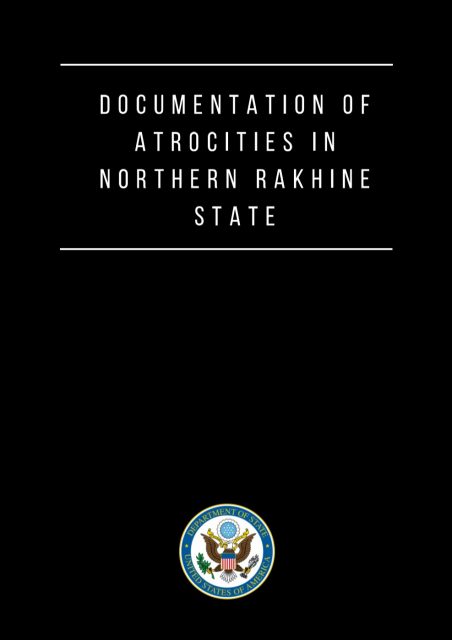Documentation of Atrocities in Northern Rakhine State


Executive Summary
The Bureau of Intelligence and Research (INR), with funding support from the Bureau of Democracy, Human Rights, and Labor (DRL), conducted a survey in spring 2018 of the firsthand experiences of 1,024 Rohingya refugees in Cox’s Bazar District, Bangladesh. The goal of the survey was to document atrocities committed against residents in Burma’s northern Rakhine State during the course of violence in the previous two years.
The survey used a representative sample of refugee camp populations to provide insights into the violence they witnessed. Any hearsay testimony was not recorded. Survey results reveal the pattern of events refugees experienced. There may be cases when multiple refugees reported witnessing the same event, so the percentages from this survey should not be extrapolated to come up with a definitive overall number of events. The National Geospatial-Intelligence Agency (NGA) worked with INR to map and analyze the resulting data (see Map 1).
The results of the survey show that the vast majority of Rohingya refugees experienced or directly witnessed extreme violence and the destruction of their homes. They identified the Burmese military as a perpetrator in most cases.
- Most witnessed a killing, two-thirds witnessed an injury, and half witnessed sexual violence (see Figure 1).
- Rohingya identified the Burmese military as a perpetrator in 84% of the killings or injuries they witnessed.
- Three-quarters say they saw members of the army kill someone; the same proportion say they witnessed the army destroying huts or whole villages. Police, unidentified security forces, and armed civilians carried out the rest of the observed killings.
- One-fifth of all respondents witnessed a mass-casualty event of killings or injuries (either in their villages or as they fled) with more than 100 victims.
The two main phases of violence—the first in October 2016 and the second beginning in August 2017—followed attacks against Burmese security forces by the Rohingya insurgent group Arakan Rohingya Salvation Army (ARSA). The vast majority of reported incidents against Rohingya took place from August to October 2017. The survey shows that the military, which used the ARSA attacks to justify its so-called counterinsurgency operations in northern Rakhine State, targeted civilians indiscriminately and often with extreme brutality.
- Forty-five percent of refugees witnessed a rape, and the majority of rapes witnessed were committed, in whole or in part, by the army. Overall, nearly 40% of refugees saw a rape committed by members of the Burmese security services—either police or military—including 18% who saw them commit a gang rape.
- Members of the security services, as well as non-Rohingya civilians in some cases, targeted children and pregnant women.
- Those who were left behind because they were elderly, sick, or otherwise infirm were frequently found dead when their relatives returned to check on them.
The survey reveals that the recent violence in northern Rakhine State was extreme, large-scale, widespread, and seemingly geared toward both terrorizing the population and driving out the Rohingya residents. The scope and scale of the military’s operations indicate they were well-planned and coordinated. In some areas, perpetrators used tactics that resulted in mass casualties, for example, locking people in houses to burn them, fencing off entire villages before shooting into the crowd, or sinking boats full of hundreds of fleeing Rohingya.
Download full report HERE.

